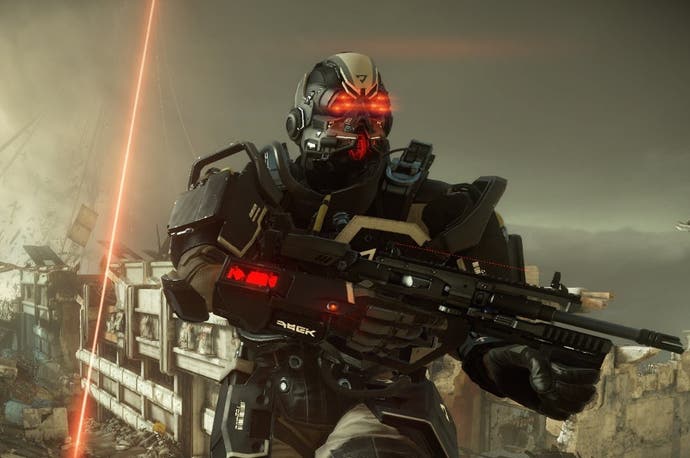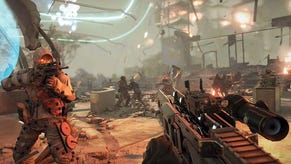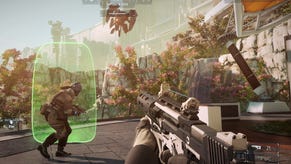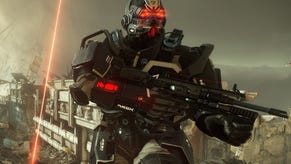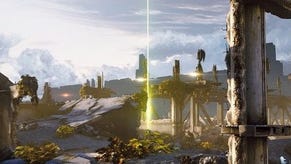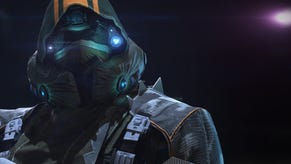Killzone Shadow Fall: Intercept review
For the horde.
Horde mode: the enduring last gasp of the ailing shooter. It gives the multiplayer team the chance to leverage the AI of a campaign into its own mode. No need to worry about weapon balance or spawn camping or any of that other nightmarish stuff that separates the CODs from the dead fish in the water.
And a Horde mode is exactly what Killzone Shadow Fall's new expansion, Intercept, is. Four players team up to battle waves of Helghan soldiers, each one picking a complimentary class and leveraging their respective talents until their foes are vanquished and a high score is achieved.
Typical stuff, then, and hardly the most inspiring way to beckon languishing PS4 players back into Guerrilla Games' beautifully rendered world - but dismiss Intercept at your peril. This is Shadow Fall at its best, by a distance, and a reminder that the Dutch studio still knows how to make things go bang.
At its most basic level, Intercept corrects Shadow Fall's most heinous wrong. It's a game about shooting Helghast. Often, and without mercy. There are no Frogger-style platforming sections, no wretchedly conceived stealth set-ups and no escort missions. This is big heavy guns shooting big heavy dudes, and all the better for it.
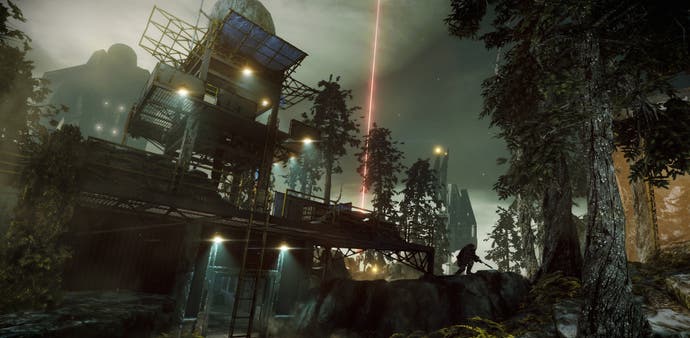
Across Intercept's four maps, Helghast attempt to conquer three Domination-style beacons while you and your cohorts fight to defend them. The classes are standard but appropriate. Assault does most of the grunt work, capturing uplink beacons, taking out bad guys and hovering up stragglers with his portable gun drone (all special abilities operate on a cooldown system).
He's joined by the Marksman, a sniper with laser tripmines who does most of his work at the home base, blasting unsuspecting troops from a high vantage point. Third on the team is the Tactician. He's not blessed with the biggest gun, but he contributes to the war effort by dropping turrets in key positions and placing a shield to protect his teammates.
The final part of the puzzle is probably the most important. The Medic is responsible for keeping his cohorts not only alive but also topped up with ammo. He can drop a pair of supply crates on the map and launch a healing drone that buffs any team-mates in the local area. And, crucially, the medic has the power to revive his fallen comrades.
This really is vital, as Intercept builds its matches around a point-scoring system that doubles up as currency. Every action you carry out in the game - killing, capturing, healing - awards points. Yet every death requires a costly respawn - 50 points each time. The team's trying to get to 1500 points in the Quick Match mode (easily the most populated and time-appropriate, when compared to the two lengthier options available) and a quick series of deaths can decimate that score. End up without the required points to respawn and it's just a matter of time before your team is crushed under the weight of a Helghast assault.

Intercept continues to layer odd but palatable rules onto its familiar template. Points scored by individual players have to be 'banked' in order to count. This involves sprinting back to base to drop off any points you've scored into a big yellow circle. This back-and-forth interrupts the flow of a standard Horde fight by ensuring players have to leave their positions and head home regularly. Not only that, it also adds a lovely risk/reward tension. The more points you accrue without banking, the higher your multiplier will soar. Get killed, though, and you lose the lot. It's a reasonably small alteration to a classic horde mode, but it does genuinely feel about as fresh as anything in this world could possibly feel.
The wrinkles don't end there. Back at the base, a sort of chunky 1970s computer sits around, waiting for its owner to shove giant fuel rods into its side. Bank points to unlock fuel rods (or petrusite, as they're stupidly called), carry them to your base, shove them in the machine, and you can log on to activate a bonus. It might be a mortar strike, an instant capture of all three uplink beacons, some extra defensive turrets or even jetpacks. It's another clever touch that only increases the variety of options in a match.
Matches are both fast and tactical, requiring keen teamwork and knowledge of the role you're playing. Each quartet can only consist of a single version of each class, so one weak link can let the side down drastically. Unlike other Horde variants, Intercept's waves aren't timed, so it feels less like tower defence and more relentless.
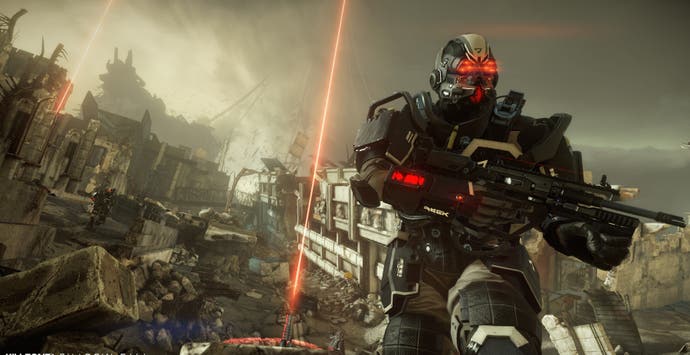
Cloaked enemies join the fray from an early stage and the Helghast regularly drop in boss enemies to shake things up, too. These look like the annoying boss from the single-player campaign and are capable of teleporting and cloaking as well as being accompanied by their own drones. Again, teamwork is the order of the day.
If this all sounds alarmingly positive for a tacked-on Horde variant, it's probably as much about surprise as it is the actual quality of the game mode. Killzone Shadow Fall was a disappointing campaign - at times, an awful one - coupled with functional but bland multiplayer. Conventional wisdom suggests that seven months later, a four-map Horde add on should be about as exciting as a conversation with Steven Gerrard. Yet, while Intercept is hardly a revolution in online multiplayer, it at least restores some pride to a franchise that had lost its way.
Delve a little deeper and the cracks do begin to show. Enemy AI varies from excellent to atrocrious. Sometimes they'll flank you around a single piece of cover, Halo Elite style; other times they'll stand cluelessly next to a wall, waiting for a bullet to the cerebral cortex. Also, once the Helghast begin to stage a comeback it can become extraordinarily difficult to stop them. This makes for some long, dramatic matches, but it's difficult to justify 30 straight minutes of battle in a losing effort. Some balance work might help to lessen the misery of these hopeless matches.
Still, it's hard not to be impressed. The fact Intercept is due for release as a standalone product later in the year suggests Guerrilla intends to offer continued support. The meagre number of maps means repetition soon kicks in, but the gorgeous visuals, frenetic carnage and demanding teamwork make for the tightest Horde variant since Mass Effect 3's. A surprisingly good time for all.
